|
This is a project based on the artist, Sol LeWitt. I did something similar last year. You can read the details here. This year, I just had students color it using markers instead of gluing down strips of paper.
0 Comments
2nd Grade just finished up learning about Sol LeWitt. Sol was an American artist who passed away just a few years ago. He is known as a conceptual artist as well as a minimalist. Conceptual artists believed that even something as simple as coming up with the idea for an artwork could be considered art and minimalist created work as simply as possible. Sol is most well-known for his instructional wall drawings. He would write up directions for an artwork and then send the directions to a museum or gallery. It was up to the museum/gallery to create the artwork based on his instructions. Because the instructions were open to some interpretation, no two artworks came out the same, even with the same directions. He is also known for his simple shapes, lines, and colors. 2nd grade did a project somewhat similar to this last year with Bridget Riley using colored pencils. This year I put a different spin on it and focused on Sol LeWitt instead. After learning about Sol we had a conversation about complementary colors and where they were in relation to each other on the color wheel. Students were then given a 6x18 sheet of paper that I had folded into thirds. I also pre-cut tons and tons of half inch strips of construction paper. Each table was given a set of complementary colored strips and students were asked to fill up each 1/3 of their 6x18 paper with a different set of complementary colors. By the end of class, they had all three sets of complementary colors displayed across their 6x18. PLEASE NOTE THAT YOU NEED TO DO AN AWESOME JOB OF GLUING OR YOUR SHAPES WILL LOSE ALL THEIR PAPER STIRPS WHEN YOU CUT THEM OUT NEXT CLASS. On the second day of the project, we recapped on Sol LeWitt. Then we did the EXACT. SAME. THING. as we did last class. We glued 1/2 inch strips down onto another 6x18. On the final day of the project, we talked about Sol’s use of geometric shapes. Students used geometric shaped tracers to trace a shape onto each section of one of the 6x18 papers. Students then cut out their shape and glued it down to their remaining 6x18 paper, making sure that they gave their shape a quarter turn so that the shape’s lines were perpendicular to its background. When finished, students tweeted (their version of an exit ticket) what the three sets of complementary colors. Lastly, I found some instructions for a instructional drawing online so students were asked to make their own drawing by following the instructions. At the end of class, we toured our “art museum” and checked out how different everyone’s work was based on the same instructions. This also gave us a chance to talk about how you act in an art museum. Tip #1: Walk SLOWLY. Tip #2: Walk with your hands behind your back. Tip #3: Mutter “That’s interesting” in front of an intriguing artwork. The students LOVED learning about Keith Haring. Mr. Haring was an American Pop Artist who was a prominent street artist during the 1980's. Artists are constantly striving to have their work seen by as many people as they can. The more widely seen the works are, the more likely the artist will make money and become famous. Keith Haring had a brilliant idea one day while riding the subway in New York City. In the subway, they would typically cover up old advertisements with large black sheets of butcher paper. He decided to start drawing on these black sheets of paper with chalk. Because the subway system is so popular, it allowed millions of people to see his drawings everyday. What Haring was doing though was illegal. He was arrested multiple times for his graffiti vandalism even though his drawings were only done in chalk. However, because his drawings brought happiness to so many people, he was willing to be arrested if it meant that people could see his work. He started to become more and more famous and began to be hired to paint murals in communities. As he became more famous, his work also became more expensive due to demand. He decided to open his own store called the Pop Shop where he sold shirts, buttons, prints, etc of his work for a low price. He believed that anyone should be able to see and own his work, not just the rich. His work is still highly recognized today and is especially well-known for his ability to show movement in his paintings. Our first day of the project, each table was given a large sheet of butcher paper based on their table color. One student from each table laid on the paper and the other students traced around them. Then, using their paper's complementary color (red and green, blue and orange, or purple and yellow), they painted in their figure. We had to put about 3 coats of paint on it. After painting a coat, I then had them do a little activity each class. The first class, I had taped up a bunch of black paper around my room. Students were given chalk and they could go around and draw 'graffiti' inspired my Haring's drawings. Haring's cartoonish drawings never had facial features and typically featured a bold black outlines and one solid color for the body. Another day, after adding another coat of paint, students played a game called 'Roll-A-Haring'. They were given a worksheet that had 6 different heads on it, 6 bodies, and 6 legs. Students would roll a die and the number would correspond to a head on the worksheet. They would then do it for the body and the head. They had a blast creating all different kinds of Haring-esque drawings. After getting a few coats of paint on our murals over several class periods, we added a bold black outline and then a bunch of crazy movement lines on the background.
|
Devon CalvertHarmony and Consolidated Elementary Art Teacher in Milton, WI. UW-Eau Claire graduate. WAEA President. Apple Teacher. Archives
March 2019
Categories
All
|







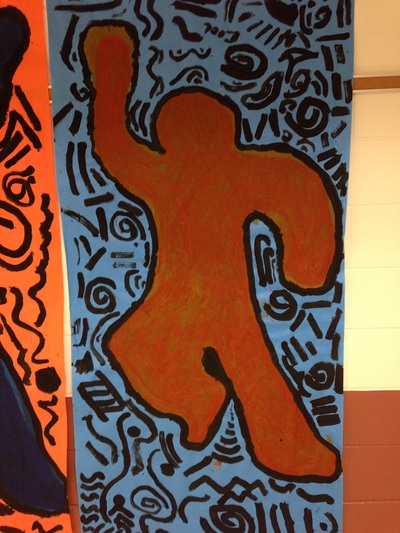
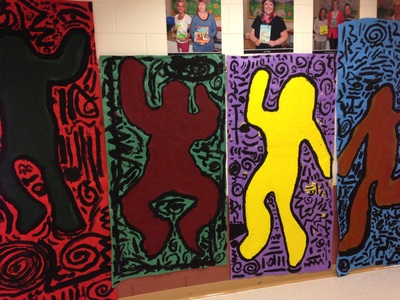
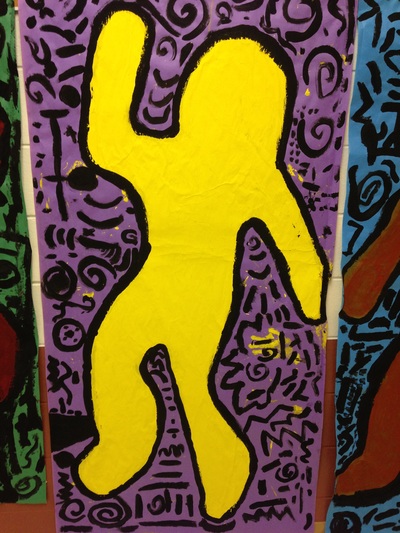
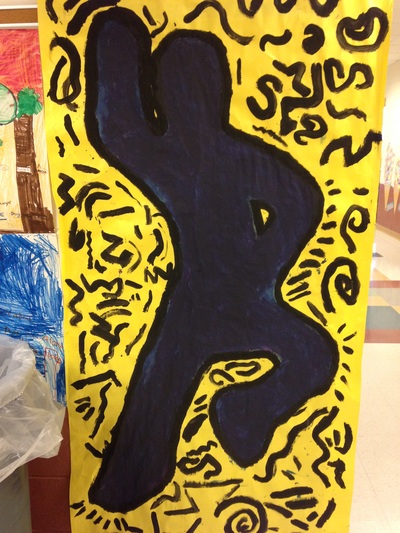
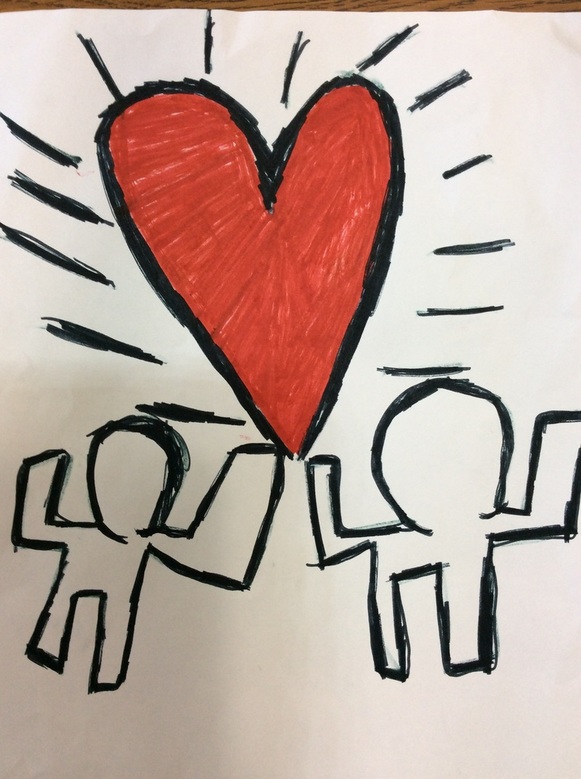

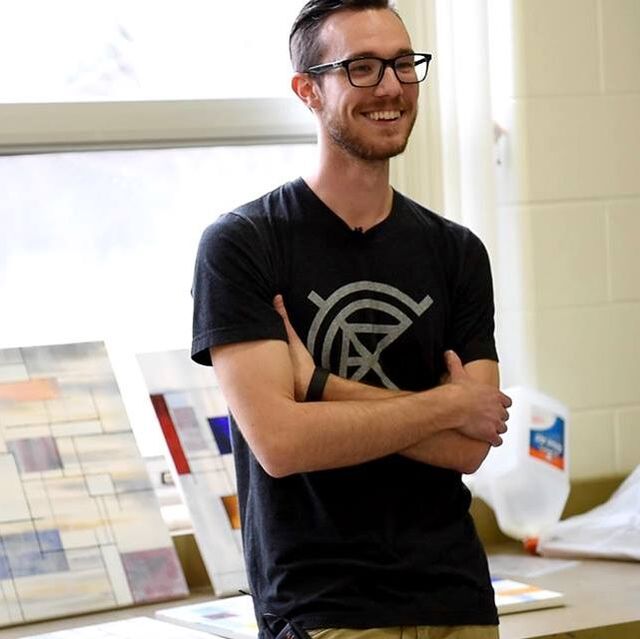
 RSS Feed
RSS Feed
